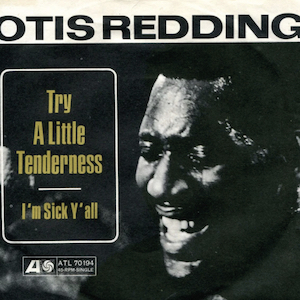Webbed; Music in the Family
By George Kowalik
The music industry is a web of contact, association and collaboration. Within this are the internal relationships of the bands themselves – fabric made from growing up together, going to the same school or university, meeting at concerts, being introduced through other musicians. Often a band will be built on a friendship, or multiple; historically, there’s been an equally dominant trend of bands consisting of family members.
This can be seen everywhere: rock bands, pop groups, in the mainstream, underground, in this country, elsewhere, back in the ‘60s, everywhere today. It is and always has been ubiquitous. There are bands that stay completely in the family, like the three Jonas Brothers (Joe, Kevin and Nick) or HAIM sisters (Este, Danielle, Alana). Or there are bands that contain siblings but aren’t exclusive to that family, such as Radiohead (guitarist Jonny and bassist Colin Greenwood) or Oasis, who are still defined by the explosive dynamic between its Gallagher brothers despite splitting a decade ago.
That is, families don’t always get on. This doesn’t change just because they decided to start a band together. Famously, The Beach Boys always had to compete with the arguments of their own Brian, Carl and Dennis Wilson. Members Mike Love (cousin) and Al Jardin (friend) should have been welcome peacemakers, but only increased tensions. In the mid-70s, the band were effectively split into two camps: Dennis and Carl on one side, Mike and Al on the other, with Brian in the middle making decisions nobody was happy with, to results that hardly reached the heights of their monumental ‘60s success. Dennis died in the ‘80s, Carl in the ‘90s, and today Brian Wilson still performs the band’s masterpiece (Pet Sounds) as a glorified solo act.
 The Beach Boys in 1965. Brian, Carl and Dennis are right-centre, right and front, respectively
The Beach Boys in 1965. Brian, Carl and Dennis are right-centre, right and front, respectively
But the band’s heyday completely relied on the chemistry between the trio of brothers at its centre. Elsewhere, The Kinks and AC/DC were both founded by two brothers, the Bee Gees by three… two of Spandau Ballet’s members were brothers, two of Arcade Fire’s six are, as are three of Kings of Leon’s four… electronic duo Disclosure are brothers, the two voices of First Aid Kit are sisters, The Proclaimers are twins. Families decorate the entire, illustrious history of music.
Some play on the idea. The Chemical Brothers – aka Tom Rowlands and Ed Simons – aren’t really brothers. The White Stripes worked under stage names, remaining mysterious about their fake family narrative of “siblings” Jack and Meg White for the whole fourteen years they were active. They were in fact a married couple for four of those fourteen; or so they tell us.
 Jack and Meg White, known for their signature red, white and black outfits
Jack and Meg White, known for their signature red, white and black outfits
Either real or fictional, sibling relationships are vitally important to music. It’s also the case with the other arts. Take cinema’s Coen brothers (responsible for Fargo, The Big Lebowski and No Country for Old Men), or Wachowski siblings (the Matrix trilogy, V for Vendetta, Cloud Atlas). Sometimes the people we’ve grown up with and know best are easiest to share a creative wavelength with. It makes sense.
Returning to music: a personal favourite and great example of an interesting take on the idea are Cincinnati’s The National. The current indie heavyweights (and recent Grammy winners) are made up of two sets of brothers and one anomaly: Aaron and Bryce Dessner, Scott and Bryan Devendorf, and frontman Matt Berninger. A Berninger brother does exist – Tom, who finds his brother’s band pretentious and prefers far heavier music. He also prefers investing his creativity in filmmaking, and even directed the 2013 documentary/concert film Mistaken for Strangers about his brother’s band… even though he doesn’t like them.
 Matt Berninger on stage in 2011
Matt Berninger on stage in 2011
If you search his filmography on the internet, this is one of only two directing credits, along with a 2011 music video for The National. Even when our siblings pursue an entirely different creative avenue, those two avenues can converge and lead to collaboration in the end anyway. I bet their parents are proud.
Image credits:
The Beach Boys – Viniciusmc
The White Stripes – Helen RY Sun
Matt Berninger – SunOfErat
(all Wikimedia Commons)





